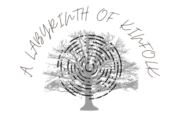Welcome to “A Labyrinth of Kinfolk,” where the past comes alive through the art of genealogy and family history research. As a passionate researcher and seeker of mysteries, I understand that hitting a dead end in your journey can be both frustrating and intriguing. Fear not, for in this post, I will delve into strategies that can help you navigate those genealogical roadblocks and find hidden gems in your Australian ancestral history.

1. Embrace the Mystery:
Just like exploring a labyrinth, family history research is filled with twists and turns. Dead ends can be seen as opportunities for discovery. Imagine you’re searching for the origins of a great-great-grandparent who seemingly vanished from records. Step back, examine the broader context, and consider alternative perspectives. This might lead you to explore collateral relatives, local histories, or migration patterns that shed light on their story.

2. Diversify Your Sources
In the heart of the labyrinth, you’ll find a variety of paths. Similarly, don’t limit your research to a single avenue. When confronted with a dead end, explore various records. For instance, if official birth records aren’t available, church records, cemetery records, or immigration documents might provide valuable insights. One researcher shared how she found a missing link by investigating old military records detailing her ancestor’s service abroad

3. Tap into Networking
Just as labyrinths are often best explored with a companion, genealogy benefits from collaboration. Engage with fellow researchers, historians, and genealogists. Online forums, social media groups, and local historical societies are treasure troves of wisdom and camaraderie. An Australian researcher discovered a forgotten family branch by connecting with distant relatives who possessed hidden letters and diaries.

4. Think Outside the Box:
Sometimes, the path to discovery lies beyond the obvious. In the same way that labyrinths have hidden corners, unconventional sources can reveal ancestral stories. For instance, mining accident reports, land records, and even oral histories passed down through generations can provide rich context. A researcher pieced together a relative’s history through old newspaper clippings and advertisements.

5. Patience: The Labyrinth’s Lesson:
The heart of any labyrinth journey is patience. Likewise, genealogy requires time and persistence. As you encounter dead ends, remember that each piece of information you gather is a stepping stone toward unveiling your kinfolk’s narrative. Celebrate each small victory along the way. An Australian researcher’s journey to uncover her family’s history spanned years, but the reward was a captivating multigenerational saga.
In the labyrinth of family history, every twist and turn holds the promise of discovery. Australian researchers, armed with curiosity and determination, can overcome dead ends by embracing the unknown, diversifying sources, collaborating with fellow enthusiasts, exploring unconventional avenues, and practicing patience. Just as the labyrinth eventually leads to its center, your diligent efforts will guide you to a deeper understanding of your kinfolk’s lives and stories.
So, fellow adventurers in the realm of genealogy, keep your lanterns of curiosity burning bright as you venture forth in your quest to unveil the mysteries of your Australian kinfolk. Happy researching!
Stay tuned for further tips on Navigating those research Brickwalls.

